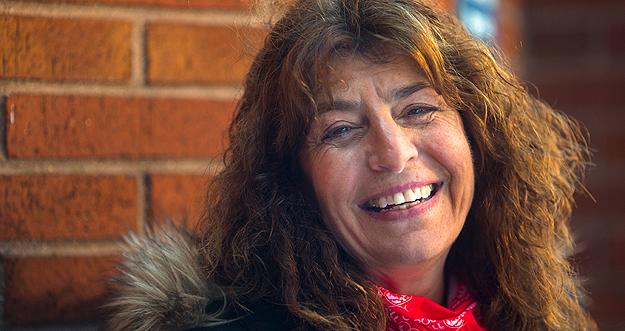We are essential, not expendable

Two very important days just passed as we go to print: April 28 and May 1. Their significance cannot be understated in this current climate.
April 28 is Workers Memorial Day. In Canada it is commemorated as a National Day of Mourning. According to the International Labour Organization (ILO):
- One worker dies every 15 seconds worldwide
- 6,000 workers die every day
- More people die while at work than those fighting wars
I believe those statistics will be altered dramatically this year as a result of the virulence of COVID-19 and our bosses’ total lack of regard for our lives, particularly those of us in the health field.
May 1st is May Day, known as International Workers Day, officially celebrated around the world by 66 countries, and unofficially, by many more. Its origins date to 19th century Chicago, honoring the Haymarket Martyrs who fought for the 8-hour day and safer workplaces. Ironically it is not “official” in the United States, its country of origin. But that is changing… America will never be the same, nor will the world as we know it. The Novel Corona Virus changed everything…
WHAT WENT WRONG?
No cushion
The race to the bottom in health care by our Employers and Government set the stage for our total incapacity to manage a crisis. This occurred over years by reducing the number of direct care providers (such as nurses) while increasing administrators; closing hospitals, beds and services deemed as “unprofitable;” cutting Medicaid funding; “dumping” the uninsured and those with mental illness and disabilities to public institutions; and practicing “lean management” (“efficiency” = fewer workers and factory-style production — more “output”), increasing agency staff, fragmenting care and constantly “reorganizing” or “restructuring” — a euphemism for layoffs.
Even worse in poor communities
This austere model squeezed workers and starved institutions that overwhelmingly cared for poor and working class communities. This downward spiral reduced many of our nurses to operate within the confines of bare bones staffing, overcrowding of patients, and crisis-like functioning.
When the pandemic hit, there was no cushion to lean on, nothing on hand to manage the influx of twice, three times the amounts of patients that we normally saw—many of them deathly ill, with no place to put them. The poorer the community, the worse the conditions.
Makeshift units and ICU “pop-ups” materialized overnight, as nurses struggled to care for double, triple and quadruple an already burdensome workload. OR nurses were shifted to ICUs, procedure nurses and case managers were floated to unfamiliar areas and training — if any — consisted of two-hour modules and an orientation to where supplies were stored. Employers used “the crisis” as an excuse to walk all over its own policies, our contracts and our staff.
No preparation, no science, no protection
The Government was sleeping, the CDC was compromised, hospital administration was like a deer in the headlights — and patients and front-line caregivers paid the ultimate price. All the indicators for surviving a pandemic were ignored. What was done was too little, too late and our state, New York, became the epicenter of COVID-19 infection, with New Jersey in second place.
As chaos consumed us, we also had the double jeopardy of being unprotected. Infection Control Standards were tossed out the window and the “do the best you can” mantra that nurses are always subjected to, really meant “try to stay alive.” And some of us, sadly, tragically, UNNECESSARILY, did not stay alive. Many of us became ill. All of us are emotionally scarred. Our lives were torn asunder.
Fightback
So many nurses organized: individually, in units, as LBU leaders, as newly created Covid Action Teams, as activists in their own right and as a UNION. Many of our union staff worked around the clock, as did many of our members. To save lives — of our patients and ourselves — we had to organize like never before: in social distance rallies, email blasting, petitions, job actions, media domination, pressure on legislators and even in procuring our own PPE through the generous donations and work of our broader communities.
We also developed community and labor solidarity: there were other “essential workers who were being exploited — and dying — along with us. The most marginalized of our communities were facing starvation, eviction and worse. We recognized the need to stand together with all who were affected.
Little by little we demanded and received PPE — still not exactly what we need, but way better than when we started. Financial, housing and other supports started trickling in as we struggled for these quality of life issues. That fight continues.
Reopening
As the hardest hit regions enter a plateau-like phase of “the curve” the terror of premature “opening” looms. If you ask any nurse if she wants to visit the world of a month ago, you will hear the words: “Never Again.” Our front line workers, not just in health care but in transit, food preparation, delivery, home care deserve financial support, paid sick days, PPE and testing. Our communities need testing and whatever financial supports necessary to survive as they stay safe. Science once again needs to be implemented—not political maneuvering. Move with caution and clarity — not with desperation and stupidity. We may not have a second chance if the same mistakes are made again.
And we need system change
A for-profit health care system is incapable of dealing with a pandemic or disaster. It’s not profitable to store masks, PPE, ventilators and other critical equipment; to have “extra” staff, trained ready willing and able to absorb the shock of an influx; to keep beds open — just in case; to keep hospitals open who treat the uninsured, the poor and immigrants.
A for-profit health care system proved to be a death sentence to our communities and our workers. The time for radical change is now. And nurses are looked to — to lead that fight: a fight for survival.